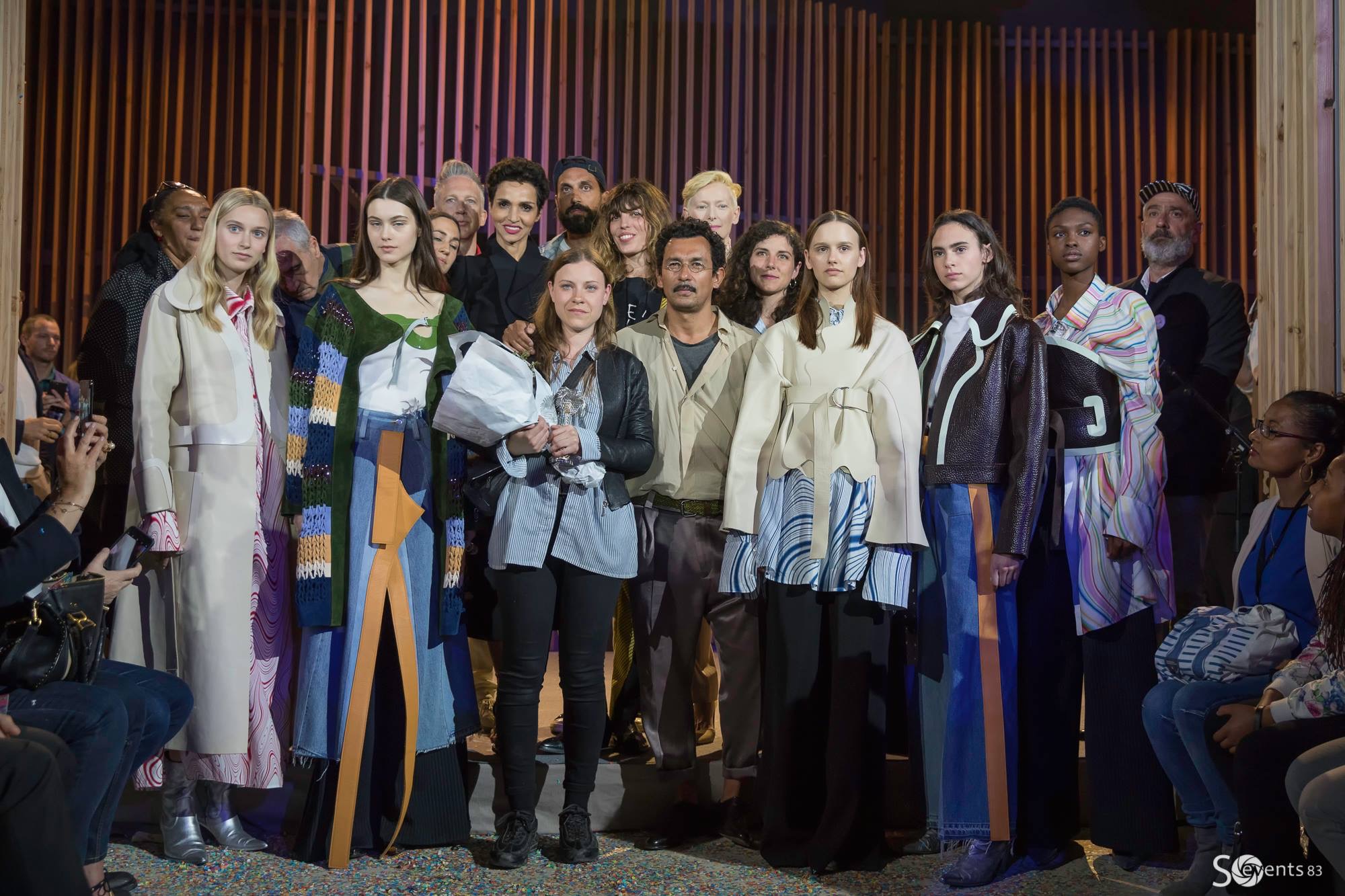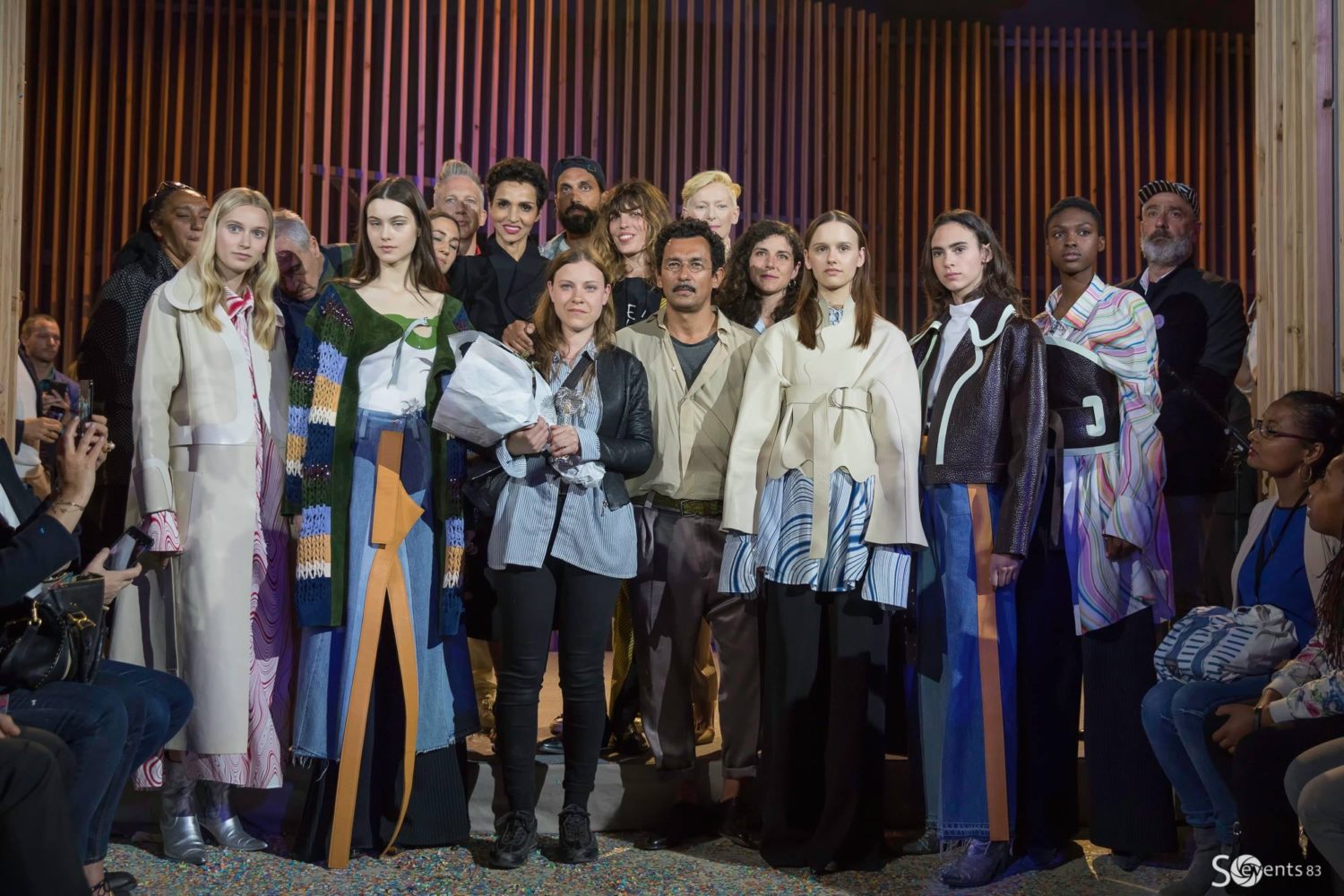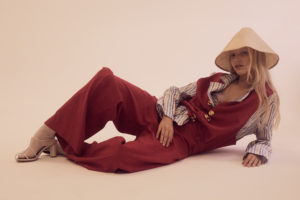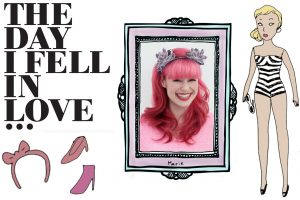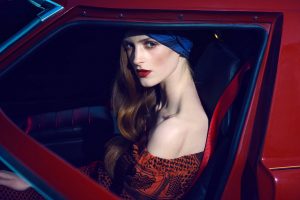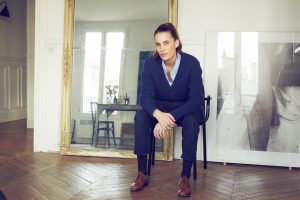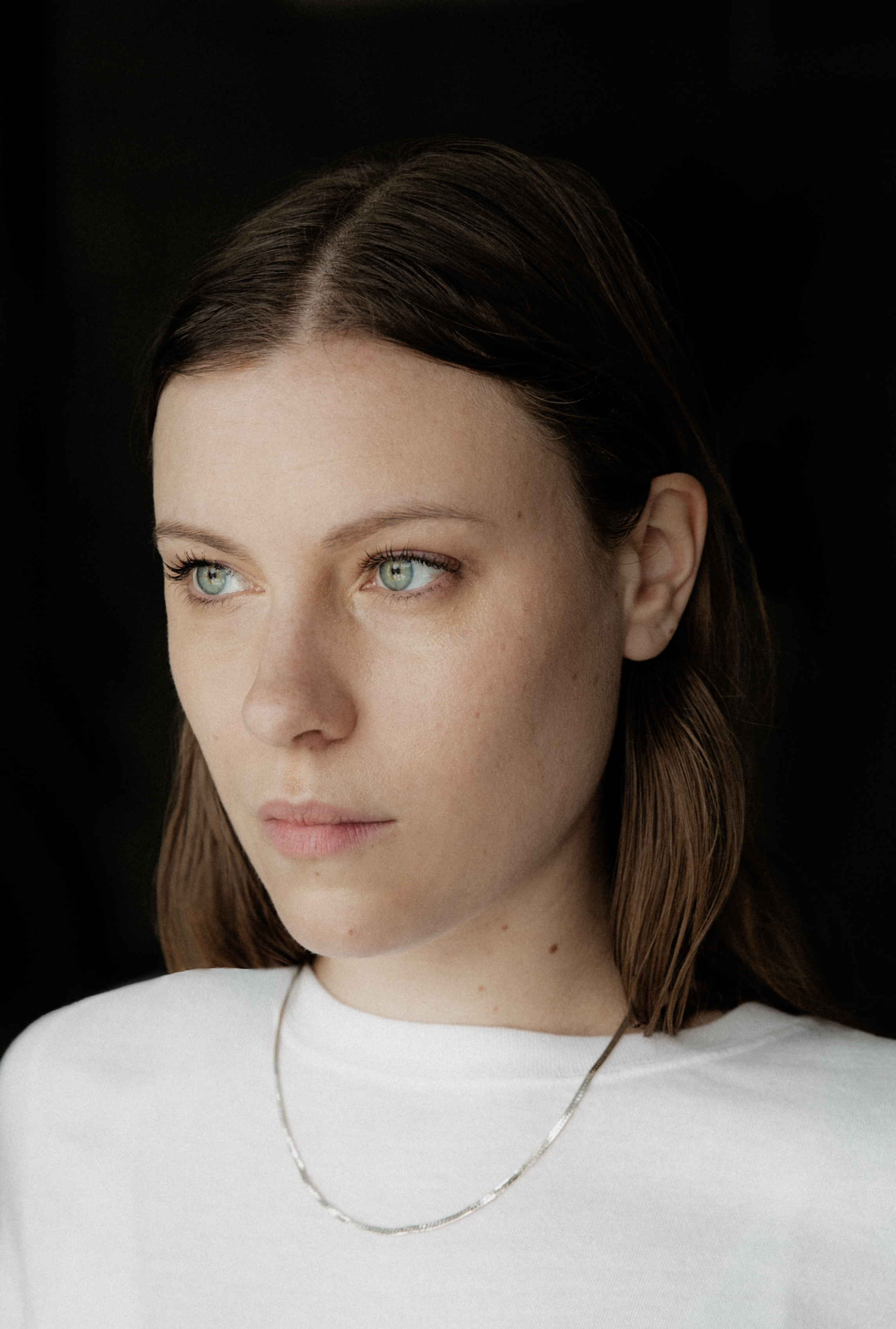
“It is important that every piece of clothes is strong. To me, fashion is all about the garment ” – such is Marie-Eve Lecavalier’s mantra. The Canadian designer is launching her eponymous label, Lecavalier, this year, after she was awarded with the Chloe Prize and jury’s special Prize at the Hyeres festival last spring. Her collection was the talk of the day, with a bold mix of women and men’s garments. She presented some exquisite pieces and an impressive work on leather as well as precious fabrics, some of them upcycled.
Former student of Swiss school HEAD, Marie-Eve Lecavalier injects in her work a particular and handcrafted idea of the luxury and beauty of the clothes. She is passionate of creation itself, the reason why she actually makes her collection with her hands and heart, she is an artist of textile and leather as much as a seasoned designer with her own and powerful vision. When she talks of “strong pieces of clothes”, she speaks of that long beige leather coat spotted on the runway at Hyères, and we think of her weaved leather jackets – made from a technique she developed herself –, of her seventies striped shirts, of the jeans made of upcyled old Levi’s which become luxury pieces through the miracle of sewing.
To be short, if there is one news that can rejoice the fashion world, it is the official launch of the Lecavalier label and its upcoming capsule collection in collaboration with Maison Simons, due for March 2019. We don’t know Lecavalier’s plans for january fashion week but nevertheless hope for an apparition of the brand… to be followed. To shorter the wait for the next adventures of the young Canadian designer, we met her at her Parisien press ofce, 2e Bureau, in the 3rd arrondissement.
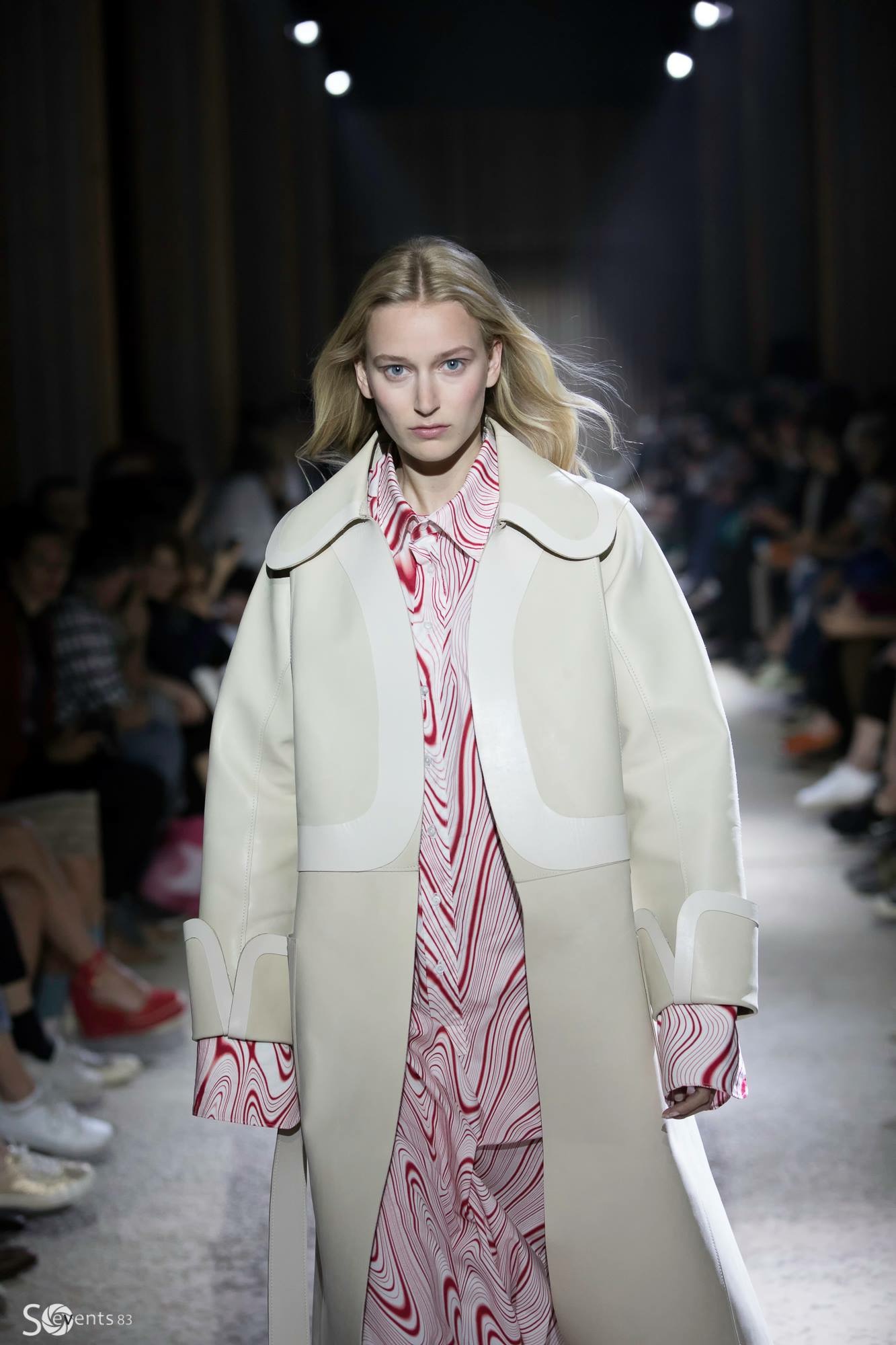
When did you know you were made for fashion and creation ?
Rather young actually, my grandmother was a dress and pattern maker and she taught me how to create at a really early age, I was five. As a child, I already made a lot of small objects like bags, little things for me and I soon wanted to custom my clothes as well. That’s how I started. At five, I made my first dress – it lasted for a minute and then fell of, I had to hold it the whole day! – but, yes, I already wanted to make, to create. My grandmother immersed me into it and it is thanks to her that it all turned out to be real with time.
Your a designer for women, but your inspirations are all drawn from men’s wardrobes : is that voluntary ?
Yes!, I just think it is very much my touch. I have always worn boys clothes, I never identifed to very feminine stuff. My work refects what I want to see and wear, and so thrives my attraction to men’s wardrobes. When I started my collection (the one presented at Hyeres, editor’s note), it was for men! But I stopped because my work is women. I see a woman wearing my outfits. So I pushed the process as far as using male patterns of clothes and I made women wear them. It created volumes, efects I was looking for and so it is through the bias of male garments that I managed to do what I wanted for women – it makes the collection a kind of hybrid. But of course, men can wear it (laughs)!
You say you draw your inspirations from ordinaries aethetics – people you meet in the street, simple things of life – but you deliver pieces with extraordinary looks and finitions : is this oxymoron at the core of your work ?
I have always thought that beauty resides in the simpler, the subtler things. With clothes, I work on codes like the male tank top or jeans for example, but only to further our perception of these garments. I like to play with perceptions, without ever going as far as abstract or deconstruction – this would not be “me” or my goal.

You often talk of “hallucination” guided your collection as a way to escape the present : was that a great escape as well, when you left Canada to learn fashion in Europe ?
I am back to Montreal now, so my great escape is over ! But as a kid, I think really wanted to go away frst from the suburbs and also to travel far away to see new things. I was very curious and always was attracted to travelling. Even today, with a foot in Montreal, I would like to keep on exploring.
Has your vision changed under the European prism?
My vision has not changed, I still have my opinions about what is happening lately, but I was happily surprised that I got recognition here, because I am not really doing the overly styled, very deconstructed and borderline trash but keeping it cool… and I’m so far from this. Not that I don’t like it, but I am so not it : some people do it well and in a very sensible way but I don’t feel like I match what is done now. That is maybe why people took interest in my work too.
You live and work in between Quebec and France : we speak the same language, but do we speak the same fashion?
I think so yes. I was taught fashion part in America, part in Europe. So yes, we do speak the same fashion, but I must speak a whole diferent than the people from my birthplace ! I might have a more American side, that is a bit diferent from Europe. Europe is in awe for Vêtements or normcore for example, which is basically the cultural approriation of a social class – as a suburbian American, it’s not genius to me. Maiybe these codes had not been seen before in Europe and so it was thought of as genius but in NYC, people were doing it long before.
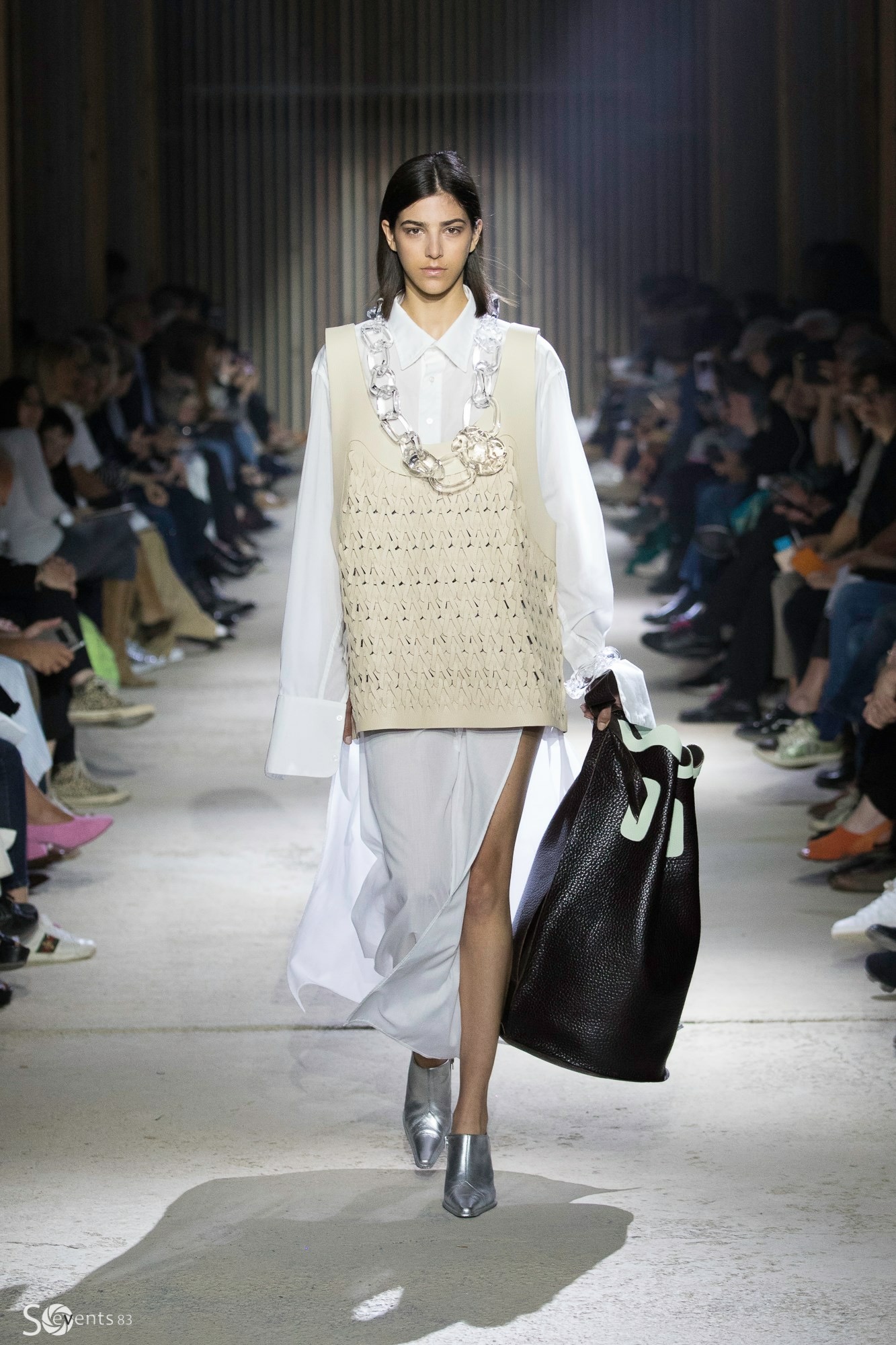
You do not seem interested in sportswear in fashion?
I’m bored with sportwear, it is everywhere. It is the most profitable thing on a marketing level, that is what sells for sure but even luxury borrows the street’s and hiphop codes – and the point of it vanished more and more. To me, what matters are the clothes, the fabrics, how they are done. A great design is more than a hoodie. Sportwear is practical – fashion means more than this. I myself don’t want to see this kind of clothes because I grew up seeing them suburbs’ stuf everywhere… I want to run away from that, I don’t want to copy something that was already has been when I grew up in the suburbs. Maybe that’s why I’m so not interested in it actually : I guess it as a certain attraction only if you’ve never seen it before and so you think it’s cool.
How is going to be organised your life in between France and Canada, now that you’re launching your brand Lecavalier?
Research and development will be located in Montreal, and Paris will be the place for presentations, my press ofce is in Paris… My brand is a leather and luxury label, and Paris is the best place to thrive. Also, a lot of contacts I made during the Hyeres festival, I now have a lot of European contacts, I studied here, had my internships… I’m very bound to Europe actually.
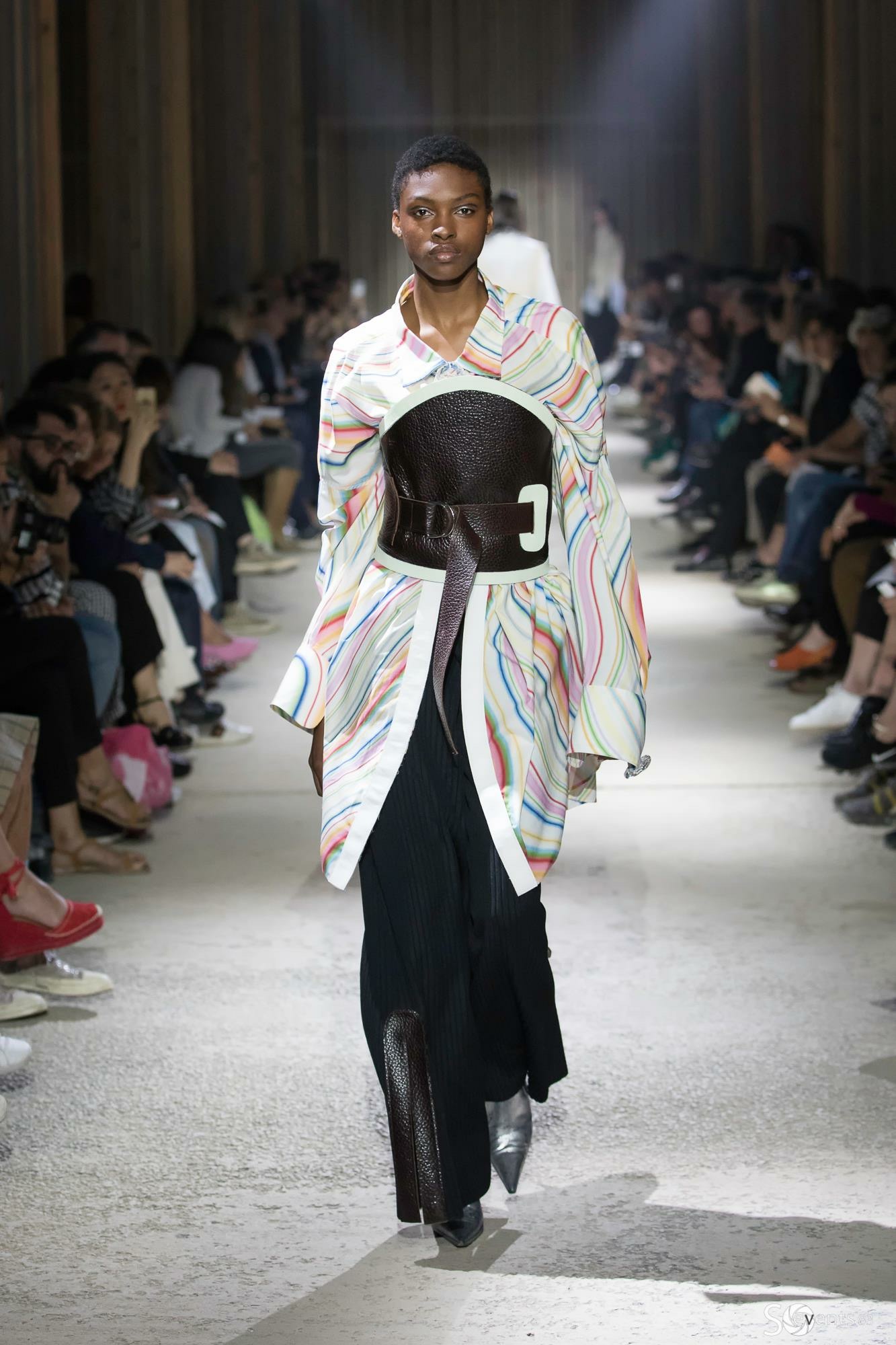
What European designers seem to be the closest to your vision of fashion?
JW Anderson – whether it is for Loewe or his brand – he’s crazily prolific and talented. He knows how to do high-fashion and fun, interesting, colorful… he has a sense for luxury but offers something diferent, like I want to do it… but in my own way ! I like beautiful constructions, noble fabrics – fashion is all about the garment. As a kid, I would see Prada coats and that was absolute luxury to me. I keep on making strong clothes, to be enjoyed separately or not. It is important that every garment is strong. I also like Pheobe Philo… but she’s on hold for now !
You can admit it now : you came to Europe because it is too bloody cold to wear your clothes in Montreal ?
Maybe !… But it is rather that Europe has better ways of working with leather ! Still, I think I would create the same way in Quebec or in Europe : I tell stories, no matter the temperatures (laughs) !
